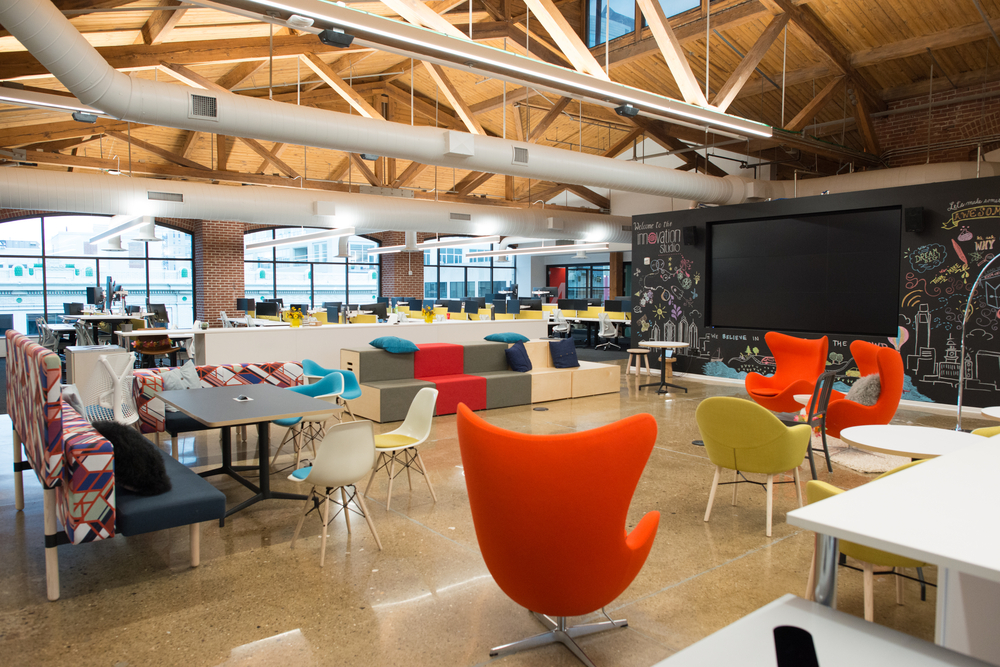
What is a collaboration hub?
A collaboration hub is a deliberately designed physical or digital environment—often a hybrid of both—that integrates space, technology, and community practices into a single ecosystem where people can seamlessly exchange knowledge, co-create solutions, and build social capital in real time or asynchronously.
In this story
Why It Matters for Remote Professionals
For digital nomads, freelancers, and distributed teams, the concept of a collaboration hub addresses three enduring pain points: isolation, fragmentation of workflows, and limited access to spontaneous knowledge spillover. By concentrating communication channels (Slack, Teams), shared resources (project boards, cloud storage), and purposeful gathering spaces (virtual cafés, coworking lounges) into one cohesive platform, hubs reduce context-switching, accelerate decision-making, and foster the serendipitous interactions that often spark innovation. Moreover, because many hubs couple low-commitment memberships with global networks, location-independent workers gain reliable infrastructure—stable internet, ergonomic workstations, secure file access—without sacrificing mobility or autonomy. In distributed companies, leadership benefits from increased visibility into project progress and team sentiment, while individuals enjoy a clearer sense of belonging that mitigates burnout and attrition.
Evolution of Work & Rise of Collaboration Hubs
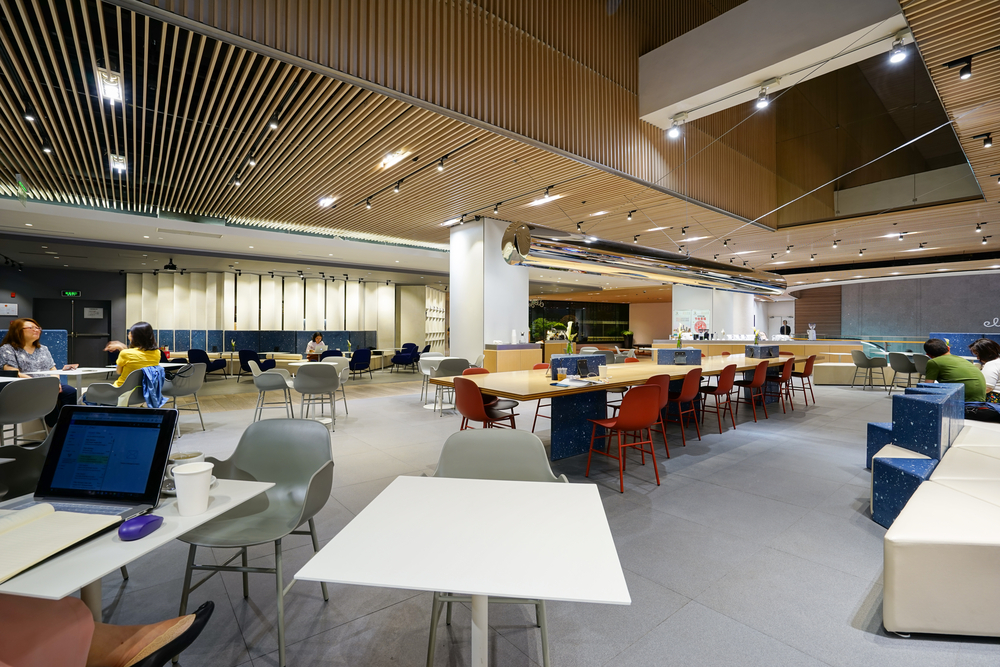
From Office Cubicles to Coworking Spaces
Throughout the late 20th century, most knowledge work unfolded in partitioned cubicles designed for efficiency and hierarchical oversight. While this layout optimized supervision and space utilization, it often impeded spontaneous interaction and cross-functional learning. Dissatisfaction with isolation and rigid nine-to-five routines fueled the early 2000s shift toward open-plan offices, which promised collaboration but frequently delivered distraction. The real breakthrough arrived when independent professionals—particularly software developers and creatives—began pooling resources in urban lofts and cafés that later formalized as coworking spaces. By offering flexible memberships, shared amenities, and a built-in community, coworking environments proved that people could remain productive without permanent desks or departmental silos. These venues established the social and infrastructural template for today’s collaboration hubs by emphasizing autonomy, serendipity, and a sense of belonging.
Acceleration of Remote Work Post-2020
The COVID-19 pandemic catalyzed a global remote-work experiment, compressing years of adoption into mere months. According to a 2021 McKinsey study, 52% of employees surveyed worked remotely at least one day per week—up from 23% pre-pandemic. Organizations large and small were forced to re-evaluate everything from IT security to performance metrics, while individuals grappled with blurred boundaries between home and office. This rapid decentralization exposed critical gaps: ad-hoc video calls replaced corridor conversations, but they failed to replicate informal knowledge spillover; bandwidth disparities created equity issues; and the lack of shared rituals eroded corporate culture. As companies shifted toward hybrid models—combining remote and occasional on-site work—they recognized a pressing need for centralized “gravity wells” where distributed talent could converge, both physically and virtually, to maintain cohesion and innovation. Such demand accelerated investment in collaboration hubs that could balance flexibility with structure, amplifying the coworking ethos while addressing enterprise-grade requirements for security, compliance, and data visibility.
Convergence of Physical and Digital Workplaces
The modern collaboration hub embodies a “phygital” paradigm in which physical environments are seamlessly interlaced with digital tooling. Hot-desking software guides employees to available workstations; smart meeting rooms auto-calibrate lighting and launch video conferences; and cloud-native platforms like Notion or Miro synchronize brainstorming sessions across time zones. This convergence is underpinned by two technological shifts. First, the proliferation of high-speed broadband and 5G makes immersive, real-time interaction viable from almost any location. Second, APIs (application programming interfaces) connect previously siloed systems—calendar apps, project trackers, IoT sensors—into a unified dashboard, enabling facility managers and team leaders to optimize space usage and collaboration patterns through data analytics. As a result, a designer logging in from Monteco Coworking in Budva can join a virtual whiteboard, request a local 3D printer, and tap into her company’s knowledge base without friction. In essence, the collaboration hub is the natural endpoint of workplace evolution: it merges the flexibility of remote work, the community of coworking, and the operational rigor of enterprise platforms to create borderless yet cohesive environments where innovation thrives.
Core Features of a Collaboration Hub
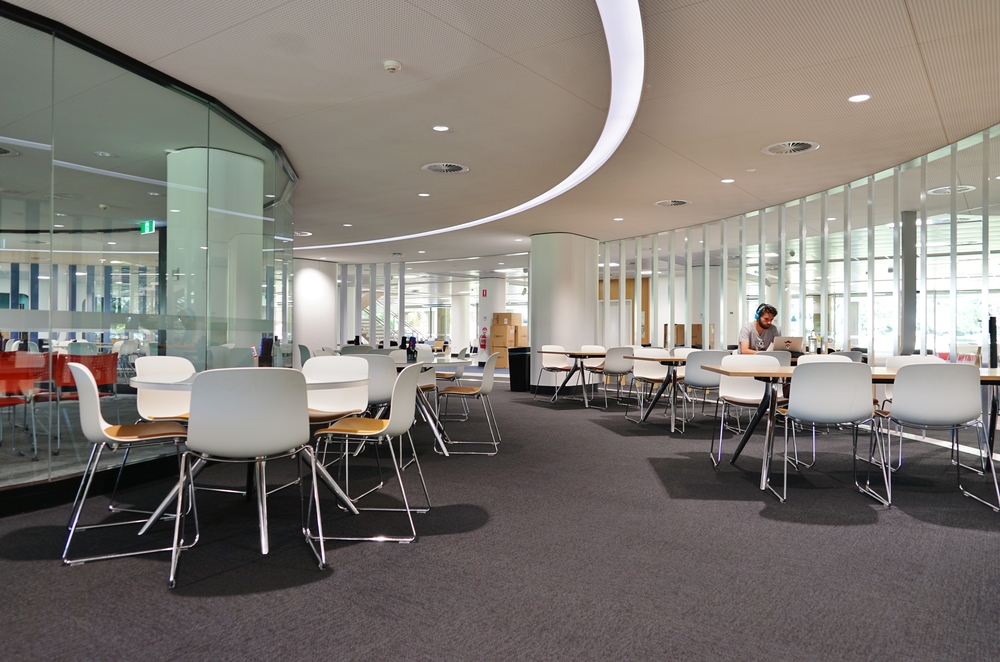
Physical Elements: Hot-Desking, Meeting Zones, Maker Spaces
A mature collaboration hub begins with an intentional spatial layout that supports varied work modes. Hot-desking—where workers reserve or claim any available workstation through a scheduling app—reduces unused real estate and encourages cross-team mingling. Because seats are fluid rather than fixed, users encounter a rotating set of peers, increasing the likelihood of chance conversations that spark new ideas. Adjacent to these touchdown desks, acoustically treated meeting zones range from two-person huddle pods to boardroom-scale studios equipped with 4K cameras and beamforming microphones, ensuring parity between in-room and remote participants. Many newer hubs also incorporate maker spaces: compact fabrication labs housing 3D printers, laser cutters, or electronics benches. These hands-on areas let software engineers prototype hardware, designers iterate physical models, and entrepreneurs test product ideas without outsourcing early-stage R&D. Together, modular furnishings, responsive lighting, and IoT climate controls create an environment that can morph daily to match evolving team needs.
Digital Stack: Slack Integrations, Miro Whiteboards, Digital Twins
Overlaying the physical infrastructure is an integrated software ecosystem that eliminates context switching. Slack channels act as the conversational backbone, but their true power emerges through app integrations—e.g., a /hotdesk command that books workstations, or an automated bot that posts real-time occupancy metrics from building sensors. Visual ideation tools like Miro provide infinite whiteboards where sticky notes, diagrams, and user flows persist long after a workshop ends; embedded video chat lets remote members annotate in parallel with on-site colleagues. Some forward-thinking hubs deploy digital twins, virtual replicas of the physical space rendered in 3D. By syncing IoT sensor data with spatial models, these twins allow facilities managers to predict peak foot traffic, test alternative layouts, or even guide a first-time visitor to an empty meeting room via augmented reality. Crucially, single sign-on (SSO) and role-based permissions weave the stack into a cohesive, secure experience, so users move from direct messaging to CAD files to analytics dashboards without juggling logins or duplicating data.
Cultural Fabric: Knowledge Spillover, Psychological Safety, Asynchronous Collaboration Norms
Hardware and software alone cannot guarantee collaboration; culture supplies the connective tissue. Successful hubs cultivate knowledge spillover—the informal exchange of expertise that occurs when people with diverse skills collide. Community managers curate events such as “show-and-tell lunches” or micro-mentoring sessions that make tacit knowledge visible to newcomers. Equally important is psychological safety, defined by Harvard researcher Amy Edmondson as a shared belief that the team is safe for interpersonal risk-taking. Hubs encourage this through transparent decision logs, inclusive meeting rituals, and visible feedback channels (e.g., anonymous suggestion forms surfaced in a #hub-feedback Slack channel). Finally, asynchronous collaboration norms respect global time zones and personal schedules. Clear documentation in shared wikis, video updates with timestamped agendas, and agreed-upon response windows (for instance, 24 hours for non-urgent issues) reduce pressure to be “always on.” When these cultural practices align with the physical and digital layers, a collaboration hub transcends being merely a space or a tool set—it becomes a dynamic ecosystem where creativity, trust, and measurable outcomes coalesce.
Benefits for Remote Workers & Organizations

Productivity, Focus, and Reduced Context Switching
A well-designed collaboration hub consolidates the myriad tools and touchpoints that distributed professionals use each day—project boards, chat threads, document repositories—into a single, coherent workflow. This integration dramatically lowers context switching, the mental overhead incurred when toggling between platforms or communication channels. A 2022 study by the University of California, Irvine found that knowledge workers lose an average of 20 minutes of productive time with each major task switch; hubs mitigate that loss by embedding Slack threads directly inside task cards or linking Miro boards to sprint dashboards, allowing users to maintain cognitive momentum. In physical hubs, zoning strategies further protect focus: sound-dampened “deep-work” areas place a premium on silence, while smart occupancy sensors signal whether a seat remains distraction-free. Collectively, these features translate into measurable gains: GitLab’s internal telemetry shows a 7% increase in issue throughput after adopting a consolidated hub approach, while freelancers report sharper workflow discipline and clearer boundaries between work sessions and personal time.
Serendipitous Networking and Innovation
Spontaneous interactions—often labeled “water-cooler moments”—are not accidents but the result of intentional design that fosters unplanned collisions among diverse skill sets. Collaboration hubs engineer such serendipity by funneling traffic through shared cafés, rotating desk assignments, and virtual “lobby” channels where newcomers are introduced via automated bots. Research by MIT’s Human Dynamics Laboratory links high rates of face-to-face overlap with spikes in creative output; similarly, hubs that run cross-disciplinary demo days or quarterly “hack weeks” regularly uncover novel product features or partnerships. For digital nomads, the benefit is amplified: working from Monteco in Budva, a UX designer might brainstorm with a Slovenian blockchain developer over espresso, then continue the conversation on a #budva-braintrust Slack thread. These diverse, ad-hoc networks expand social capital, accelerate problem-solving, and often seed entirely new ventures without the friction of formal business development.
Operational Efficiency and Real-Estate Savings
From an organizational standpoint, collaboration hubs deliver concrete cost advantages by transforming fixed expenses into variable, data-driven investments. Hot-desking eliminates the traditional one-desk-per-employee ratio; when paired with occupancy analytics, companies can reduce underutilized space by 30–40%, according to a 2023 CBRE benchmarking report. The savings extend beyond rent: shared audiovisual suites, maker spaces, and IT support consolidate capital expenditures, while AI-powered booking systems optimize cleaning schedules and energy usage. Enterprises adopting this model frequently move to hub-and-spoke portfolios—retaining a flagship HQ for brand presence but leveraging regional hubs or on-demand coworking passes for distributed staff. Freelancers and small agencies, in turn, sidestep long-term leases entirely, paying only for time and resources actually consumed. The net effect is a leaner cost structure, increased agility in scaling teams up or down, and the ability to reallocate budget toward talent development, R&D, or employee well-being programs.
Real-World Examples
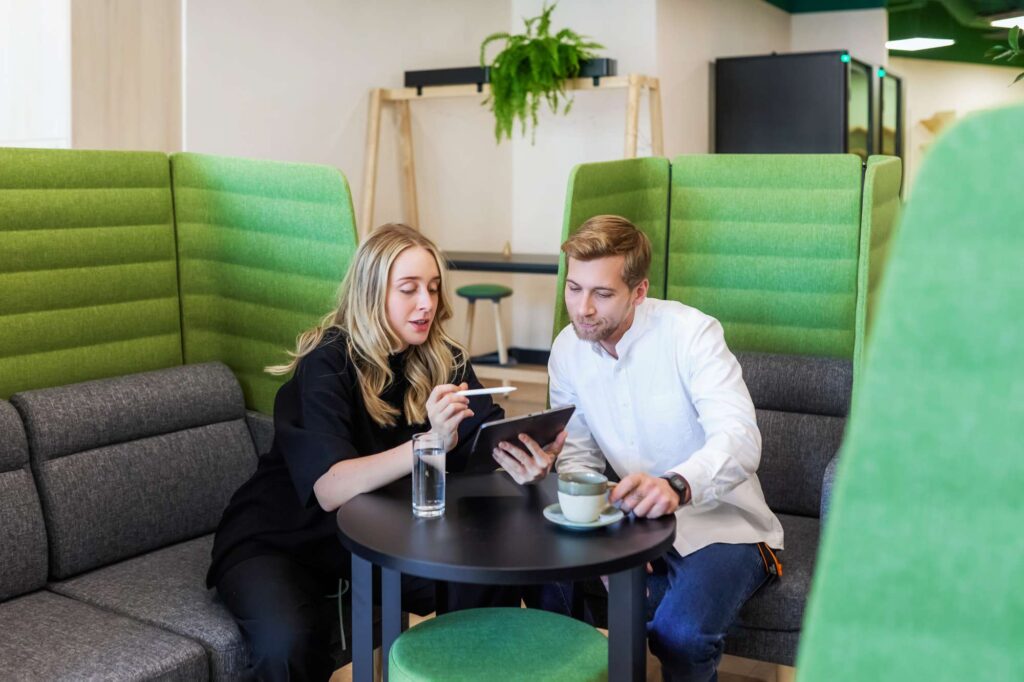
Monteco Coworking, Budva, Montenegro
Set on a quiet side street a few minutes’ walk from the Adriatic, Monteco illustrates how geographic allure and professional rigor can coexist in a single collaboration hub. The space combines sun-lit hot-desking benches with sound-proof booths, while gigabit fiber and redundant power keep remote calls stable during Montenegro’s occasional summer storms. Daily “idea espressos”—ten-minute lightning talks held on the rooftop terrace—cultivate knowledge spillover among software engineers, UX consultants, and climate-tech founders passing through the Balkans. Digital infrastructure mirrors the physical: new members receive a Slack invite upon check-in, and RFID door badges double as credentials for booking 3D printer time or joining a Miro board projected in the main studio. The result is a fluid continuum where a traveling motion-graphic artist can prototype in the maker space after morning surf, then hand off assets asynchronously to a client in San Francisco before sunset.
GitLab’s Virtual HQ Model
With more than 1,700 employees spread across 65 countries, GitLab operates a hub that is 100 % digital yet palpably communal. The company’s “handbook-first” culture—over 2,000 pages of living documentation in a public Git repository—serves as both office floor plan and corporate memory. Slack and Zoom stand in for hallways and conference rooms, but the connective tissue is an asynchronous rhythm: issue boards replace status meetings, while weekly CEO “Ask Me Anything” sessions streamed on YouTube sustain transparency. Virtual coffee chats, randomly scheduled by a bot called “#donut_be_strangers,” recreate corridor encounters and are credited with surfacing cross-functional innovations such as a customer-success analytics dashboard now used company-wide. By treating time zones as an asset rather than a hurdle, GitLab’s model demonstrates that a collaboration hub can scale globally without a single square meter of leased property—yet still foster belonging, accountability, and rapid iteration.
Corporate Hubs Like Microsoft Teams Rooms
Large enterprises often require physical anchors, and Microsoft’s Teams Rooms ecosystem exemplifies how brick-and-mortar can mesh with cloud collaboration at scale. Each room pairs certified hardware—4K smart cameras, directional speaker bars, multi-touch displays—with AI-powered software that frames remote participants, transcribes in real time, and surfaces chat context alongside shared documents. The new “Front Row” layout places video feeds at eye level, reducing hierarchy and improving engagement metrics by as much as 17 % in pilot studies at Accenture. Integration with Microsoft’s Power Platform allows facilities managers to pull occupancy data, carbon usage, and meeting sentiment into a single dashboard, turning the room itself into a digital twin of employee interaction. Companies like Chevron have rolled out hundreds of these hubs globally, enabling engineers in Houston to whiteboard alongside geologists in Perth as if they were standing shoulder to shoulder, while finance teams track utilization to fine-tune real-estate footprints and energy budgets.
Emerging Trends Shaping Collaboration Hubs
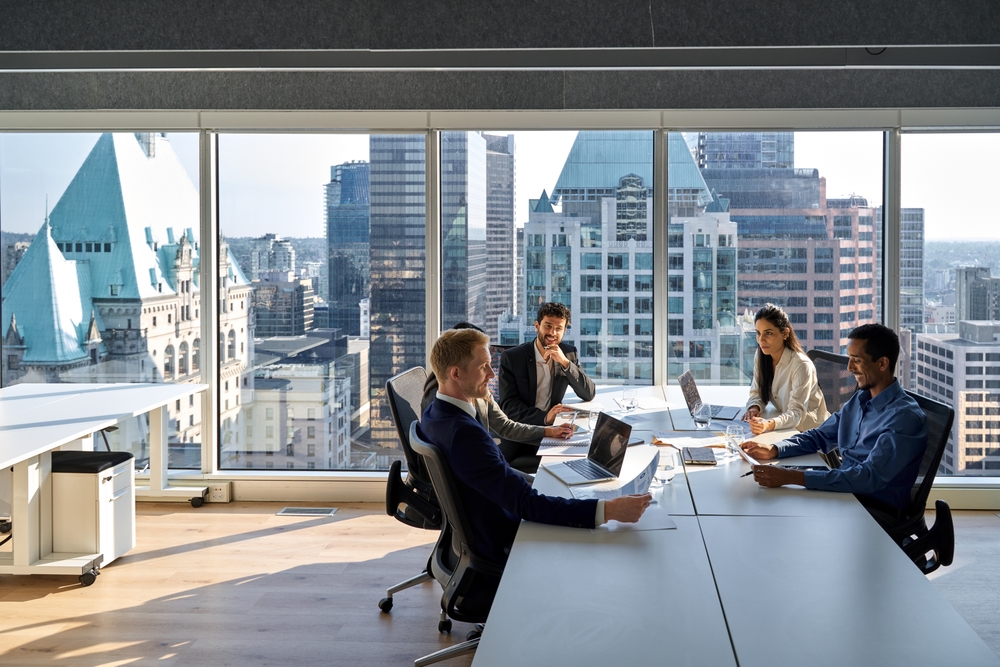
Hybrid Scheduling Algorithms Optimizing Space Usage
As hybrid work settles into a steady state, occupancy patterns have become both unpredictable and data-rich. Advanced scheduling algorithms now ingest calendar data, commute times, departmental dependencies, and even local COVID-19 case rates to predict daily demand for desks and meeting rooms. Platforms like Envoy and Kadence use machine-learning models to recommend “anchor days” when entire project teams should co-locate, thereby maximizing face-to-face overlap while keeping average desk utilization above 80 %. Some systems dynamically reassign seats overnight—similar to airline yield management—to minimize unused square footage. The result is a self-tuning workspace that aligns social density with project needs, reducing friction for employees who no longer have to gamble on whether a suitable desk or focus pod will be available.
AI-Powered Resource Booking and Workspace Analytics
Beyond merely reserving a seat, AI is increasingly orchestrating the full spectrum of resources inside a hub. Voice-activated assistants can book a 3D printer, order catering for a sprint review, and adjust lighting preferences based on a user’s profile. Computer-vision sensors feed real-time occupancy data into predictive dashboards, flagging underutilized zones or congested corridors. At Schneider Electric’s Paris innovation hub, an AI engine correlates room-booking data with HVAC usage, automatically throttling ventilation to match headcount and cutting energy costs by 18 % year-over-year. These analytics extend to human factors: sentiment analysis of meeting transcripts can identify teams experiencing friction, prompting community managers to intervene with coaching or redesigned workflows before productivity dips.
Metaverse-Style Immersive Collaboration
While virtual reality (VR) once seemed peripheral, recent improvements in headset comfort, 5G latency, and browser-based 3D engines are bringing metaverse-style experiences into mainstream collaboration hubs. Companies like Spatial and Meta’s Horizon Workrooms offer shared virtual canvases where distributed participants manipulate life-size prototypes or data visualizations as avatars. Importantly, these environments integrate with existing toolchains—Slack notifications pop up on virtual wrist displays, and Miro boards can be pulled into a 3D space with a gesture. Early adopters such as BMW report 30 % faster iteration cycles on vehicle interior design after replacing 2D mock-ups with collaborative VR reviews that include designers, ergonomists, and suppliers on different continents. While still nascent, immersive hubs promise to erase the sensory gap between physical and remote contributors, democratizing access to high-fidelity collaboration.
Sustainability and Carbon-Aware Workplace Design
Environmental accountability is moving from CSR slide decks into the operational DNA of collaboration hubs. Carbon-aware design starts with material choices—recycled aluminum furniture and low-VOC paints—but hinges on continuous monitoring. IoT meters track electricity, water, and waste in granular detail, feeding dashboards visible to occupants to nudge behavior (“Today your floor is 12 % above energy target”). On the software side, platforms such as Watershed integrate travel-booking data to calculate the carbon cost of in-person gatherings, recommending virtual options when environmental impact outweighs collaboration benefits. Some hubs, including EDGE Amsterdam, produce more energy than they consume through photovoltaic façades and AI-controlled microgrids. For remote workers choosing a workspace, carbon transparency becomes a differentiator: a freelancer can compare CO₂-per-desk metrics alongside Wi-Fi speed before committing to a day pass. As regulatory pressures mount—illustrated by the EU’s proposed Corporate Sustainability Reporting Directive—carbon-literate hubs position both occupants and operators ahead of compliance curves while contributing to broader climate goals.
How to Choose or Build Your Own Hub

Needs Assessment and Stakeholder Mapping
The first step is diagnosing why a collaboration hub is necessary and whose problems it should solve. Begin with a structured needs assessment: survey employees about pain points related to focus, communication, and resource access; review real-estate utilization data; and map out critical workflows that span location or departmental boundaries. Pair these insights with stakeholder mapping to identify champions, skeptics, and power users. For example, facilities managers influence space allocation, IT leads guard data security, and team leaders dictate work rituals. Plot each group’s priorities on a two-axis matrix—impact versus influence—to decide where early buy-in is essential. This groundwork ensures the hub’s design reflects actual demand rather than executive assumptions, minimizing rework and accelerating adoption.
Tech Stack Selection and Integration
Once goals and constraints are clear, assemble a technology stack that unifies communication, task management, and spatial analytics. Key criteria include interoperability (open APIs), single sign-on capability for seamless user experience, and vendor roadmaps aligned with your growth trajectory. A common pairing is Slack for real-time messaging, Notion for knowledge repositories, and Envoy for workspace booking, all stitched together through Zapier or native integrations. If hardware is involved, choose BYOD-friendly AV equipment with firmware that supports over-the-air updates, reducing maintenance overhead. Establish an “integration layer”—often a middleware platform or lightweight microservice—that funnels data from occupancy sensors, calendaring apps, and HR systems into a single dashboard. Doing so prevents the silo creep that plagued earlier intranets and guarantees that future tools can be added without dismantling the core architecture.
Community Management and Culture Building
Technology lays the track, but community provides the momentum. Appoint a community manager—or rotate the role among team members—responsible for orchestrating rituals that promote psychological safety and knowledge spillover. Kick-off each week with a five-minute async video prompt: “What’s one challenge you’re tackling?” Encourage peer recognition through public shout-outs in a #wins channel and run monthly “skill-share sprints” where members teach quick workshops on anything from VBA macros to urban photography. In a physical hub, curate the spatial layout to reinforce culture—place whiteboard walls near coffee machines to invite impromptu brainstorming and host “lunch roulette” that randomly pairs people for meals, mirroring Donut-style virtual coffees. Clear guidelines on response times and meeting etiquette—inclusive of global time zones—anchor these practices, ensuring that energy flows evenly between co-located and remote participants.
Metrics for Success: Engagement, ROI, Well-Being
Finally, formalize a metrics framework that transcends vanity statistics. Engagement can be tracked through active-user ratios in collaboration apps, foot-traffic data from smart badges, and qualitative sentiment scores gleaned from pulse surveys. For ROI, tie leading indicators—reduced desk vacancy, shorter project lead times—to financial outcomes like lower real-estate costs and higher revenue per employee. Well-being warrants its own lens: monitor average focus-session length via time-tracking tools, log sick days, and run quarterly burn-out assessments using validated instruments such as the Maslach Burnout Inventory. Visualize these metrics in a shared dashboard so all stakeholders see cause and effect: a spike in meeting overlap may correlate with declining sentiment scores, prompting interventions like no-meeting Wednesdays or the expansion of quiet zones. By treating measurement as an iterative feedback loop rather than an audit, organizations can fine-tune their collaboration hub in near real time, ensuring it remains an engine of productivity, creativity, and sustainable growth.
Conclusion: Key Takeaways
Collaboration hubs have evolved into multifaceted ecosystems where physical design, digital platforms, and intentional culture coalesce to support how modern professionals create value. They mitigate context switching by consolidating tools, foster innovation through curated serendipity, and drive operational efficiencies that translate directly into real-estate and energy savings. Emerging technologies—from AI-driven scheduling algorithms to carbon-aware IoT systems—are pushing hubs beyond static workplaces into adaptive, data-informed environments that respond to user behavior in real time. Whether embodied in a seaside coworking space like Monteco, realized as a fully virtual HQ like GitLab’s, or embedded in enterprise meeting suites such as Microsoft Teams Rooms, the hub model offers a scalable blueprint for aligning flexibility with cohesion.
Encouragement to Experiment and Iterate
Given the pace of technological and cultural change, no single blueprint will remain optimal for long. Organizations and independent workers alike should treat collaboration hubs as living laboratories rather than finished products. Start small—pilot a hot-desking app or launch a weekly cross-team “idea espresso”—then gather data and feedback to refine the next iteration. Measure what matters: patterns of engagement, well-being indicators, and tangible business outcomes. Be prepared to recalibrate layouts, swap software integrations, and update norms as needs evolve. In doing so, you not only future-proof your hub but also cultivate a mindset of continuous improvement that mirrors the very essence of collaboration itself.
Frequently Asked Questions
Difference Between a Hub and a Traditional Office
A traditional office is typically configured around fixed desks, hierarchical seating charts, and predominantly synchronous work schedules. In contrast, a collaboration hub is intentionally dynamic: hot-desking replaces assigned seating, digital platforms create continuity across locations, and cultural rituals support both synchronous and asynchronous workflows. The goal is to maximize knowledge flow and adaptability rather than simply provide a place to sit. In practical terms, that means a marketing analyst can log in from a virtual whiteboard at 07:00, a maker space at noon, and a rooftop “show-and-tell” at 16:00—without disrupting teammates in different time zones.
Cost Considerations for Freelancers
For independent professionals, the chief financial calculus involves comparing day passes or memberships against the hidden costs of improvised work setups. A mid-tier coworking membership in Europe averages €220 per month, which includes utilities, enterprise-grade Wi-Fi, printing, and often complimentary events. Against that, factor laptop insurance premiums for cafés, extra coffee purchases, and the productivity tax of searching for power outlets or stable networks. Some hubs offer pay-as-you-go credits for meeting rooms and fabrication labs; run a quick breakeven analysis—hours billed x hourly rate—versus membership fees to gauge ROI. Seasoned digital nomads also weigh intangible benefits such as client perception: video calls from a professional setting can justify higher rates.
Measuring Collaboration Effectiveness
Effectiveness is best assessed with a balanced scorecard combining qualitative and quantitative metrics. Quantitative data might include active users per Slack channel, average Miro board engagements, or desk-occupancy ratios. Qualitative insights come from pulse surveys asking, “Did you gain a new perspective this week?” or “How safe do you feel proposing risky ideas?” Many hubs adopt Objectives and Key Results (OKRs): for example, “Increase cross-team project launches by 15% within two quarters.” Pair these with a pre-post analysis—time-to-decision, bug-fix velocity, or sales cycle length—so you can attribute performance shifts directly to hub participation rather than external variables.
Security and Data Privacy in Shared Environments
Shared spaces amplify risk vectors: unsecured Wi-Fi, exposed whiteboards, or inadvertent screen-peeking. Modern hubs mitigate these through WPA3-encrypted networks, VLAN segregation, and mandatory two-factor authentication for cloud apps. Physical access controls—RFID badges or biometric scanners—log entries and restrict sensitive zones. From a privacy perspective, verify that the hub complies with relevant frameworks such as GDPR or SOC 2; ask for the most recent audit report. Finally, adopt a “clean-desk, clean-screen” policy: lock devices during breaks, erase whiteboards after sessions, and route confidential calls to designated privacy booths. These layered safeguards allow freelancers and corporate teams alike to reap the benefits of shared infrastructure without compromising data integrity.




Leave a Reply